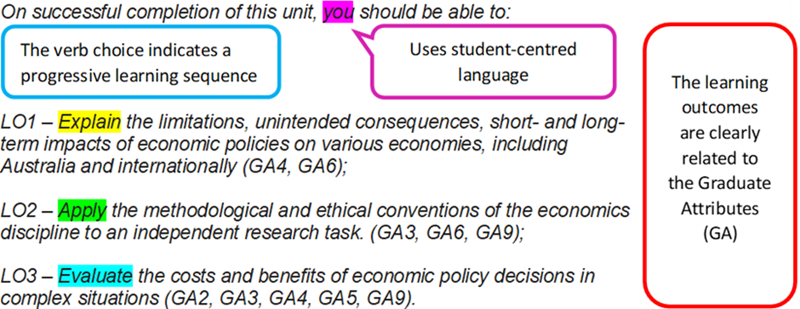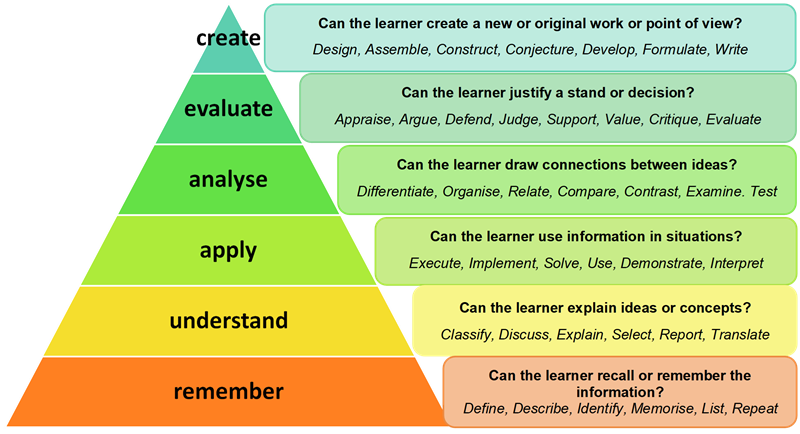Overview
- Learning outcomes need to be assessable.
- Learning outcomes should help to sequence learning.
- The focus of learning expected is communicated through the verb in the learning outcome.
- Taxonomies of learning can help to write clear Unit Learning Outcomes (ULOs) and Course Learning Outcomes (CLOs).
On this page
Writing Learning Outcomes
Taxonomies of Learning
Writing Learning Outcomes
At ACU, writing Learning Outcomes (LOs) starts at the course level. The course has a rationale that justifies its particular focus and its purpose. This aligns with a rationale for each unit in the course. As such, LOs should be based on these rationales and relate to the real-world imperative that the course/unit responds to. The focus should be on the students’ learning and understanding rather than what the teacher intends to teach. Learning Outcomes need to be clearly expressed and indicate the kind of knowledge [declarative knowledge – facts, conceptual knowledge – theory, principles concepts, or procedural or functioning knowledge – cognitive and/or physical skills] and level of performance that the student needs to attain.
LOs should ideally only use one verb. The use of more than one verb could make it more difficult to effectively assess that particular LO. Unit LOs in particular should be behaviourally oriented and assessable, as well as written from the student’s perspective. Course LOs tend to be more general. The following examples show the structure and progression of LOs.

Biggs & Tang (2011) suggest a unit should have a maximum of 4 to 6 LOs. A good way to achieve this is to aim for no more than three LOs. If this proves too difficult, you can allow yourself the luxury of more.
Some things to consider when developing learning outcomes
- The verb describing the level of learning is the link in constructive alignment; it is tied to learning and teaching activities (LTAs) and assessment tasks (ATs) to ensure the outcome is assessable (Biggs, 2014 p.9).
- Learning outcomes progress within and across units from low level verbs such as “describe” and “list” to middle level verbs such as “explain” and “analyse” through to higher level verbs such as “hypothesize”, “reflect” and “communicate” (Biggs, 2014, p. 9).
- For the different verbs, and the level of learning they describe, this progress should be sequenced, so that the same sequence of development of learning can be consistent across learning outcomes, LTAs, and ATs.
Taxonomies of Learning
The depth of learning expected to achieve the learning outcomes is communicated through the verb. Learning should be active, assessable, and sequential, with the expected level of knowledge clearly communicated through the ULOs and CLOs. The verb in the learning outcome communicates to the student what they should be able to do (Biggs & Tang, 2011). Taxonomies of learning can be used to facilitate the writing of clear ULOs and CLOs. Biggs and Collis’ (1982) Structure of Observed Learning Outcomes (SOLO) taxonomy and Bloom’s Revised Taxonomy (Anderson & Krathwohl, 2001) are useful for developing clear ULOs and CLOs.




